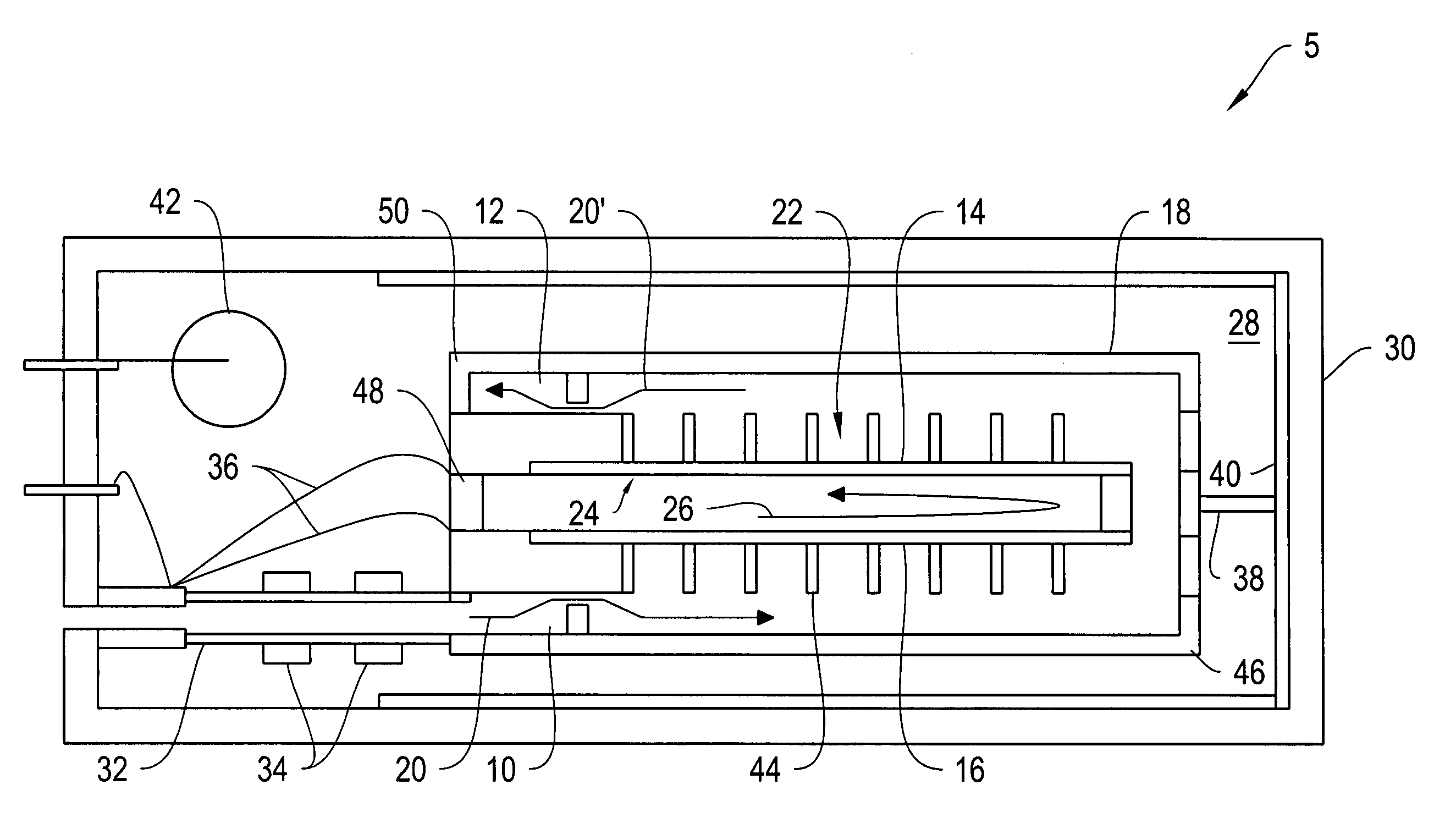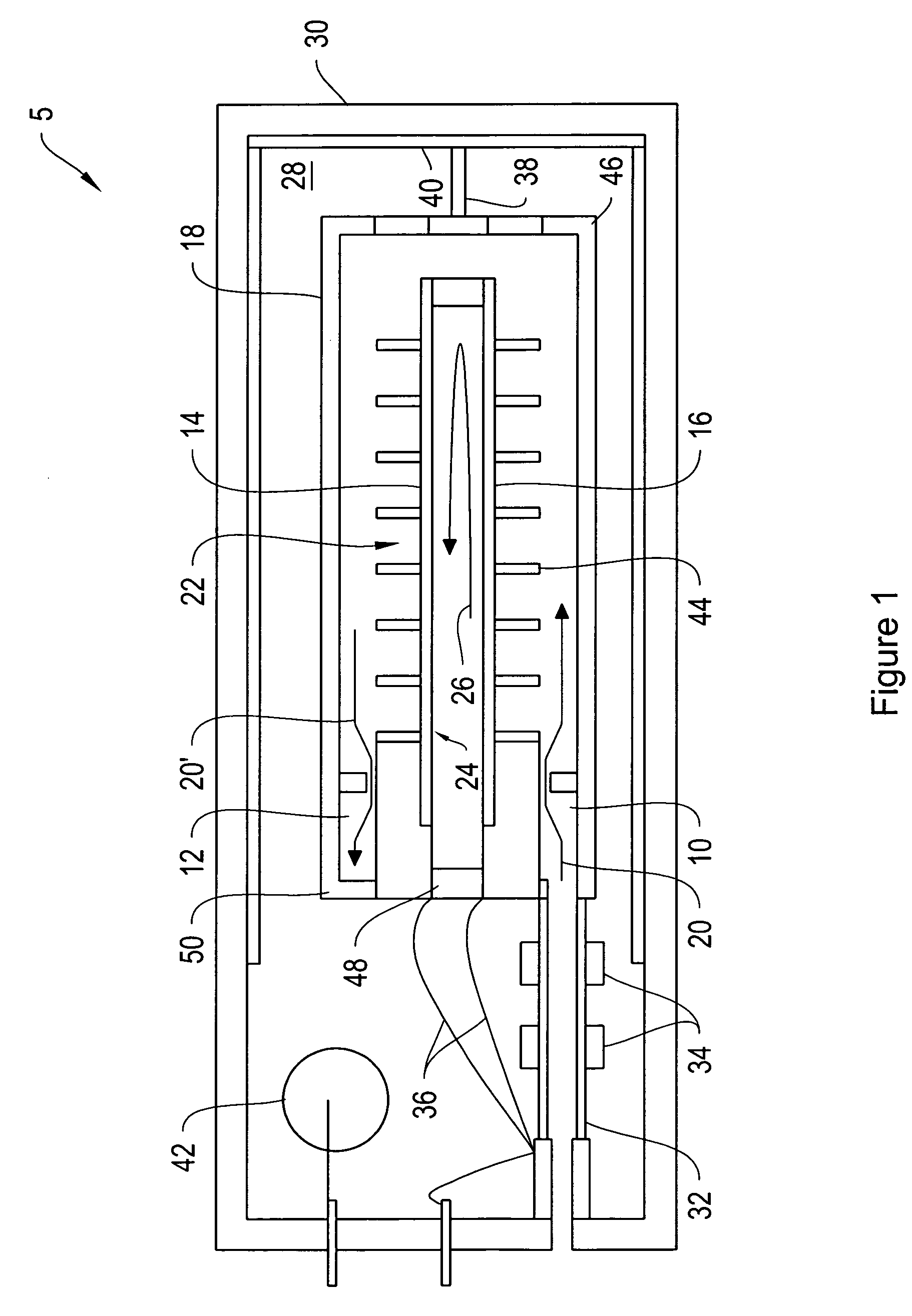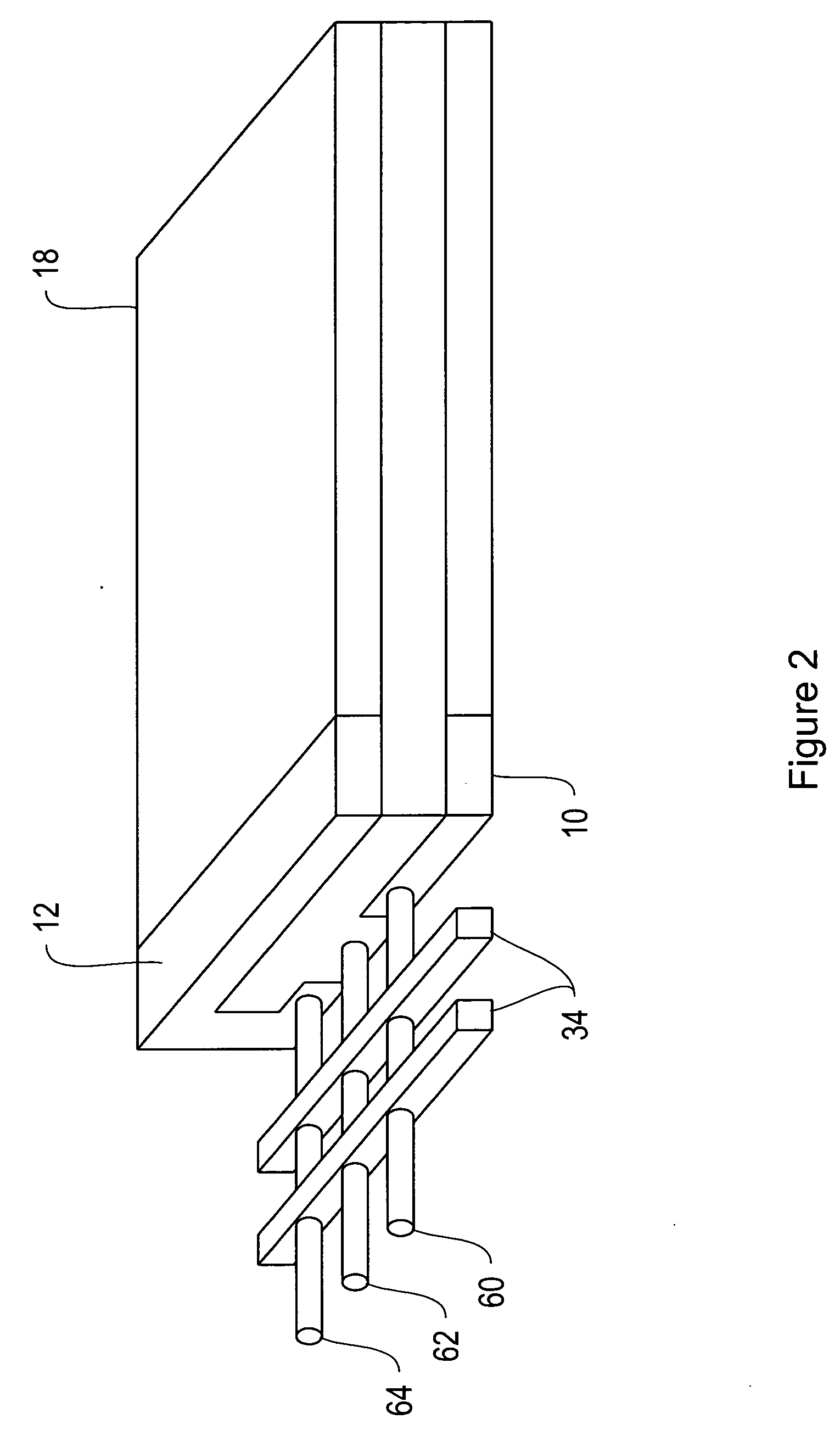Fuel cell apparatus and methods
a fuel cell and apparatus technology, applied in the field of apparatus and methods, can solve the problems of system not being able to achieve more than 10% efficiency, excessive size of the overall system, low efficiency, etc., and achieve the effects of fuel efficiency, improved thermal efficiency, and regulating thermal efficiency
- Summary
- Abstract
- Description
- Claims
- Application Information
AI Technical Summary
Benefits of technology
Problems solved by technology
Method used
Image
Examples
Embodiment Construction
[0025] The following description refers to the accompanying drawings that illustrate certain embodiments of the present invention. Other embodiments are possible and modifications may be made to the embodiments without departing from the spirit and scope of the invention. Therefore, the following detailed description is not meant to limit the present invention. Rather, the scope of the present invention is defined by the appended claims.
[0026] It should be understood that the order of the steps of the methods of the invention is immaterial so long as the invention remains operable. Moreover, two or more steps may be conducted simultaneously unless otherwise specified.
Integrated Fuel Cell Apparatus, Package, and Connections
[0027] The fuel cell apparatus embodiments described herein can produce electrical power in excess of 2 W / cc and in excess of 3 W / cc. Such fuel cell apparatus are uniquely capable of producing insulated package sizes small enough for portable application, even ...
PUM
| Property | Measurement | Unit |
|---|---|---|
| volume | aaaaa | aaaaa |
| diameter | aaaaa | aaaaa |
| volume | aaaaa | aaaaa |
Abstract
Description
Claims
Application Information
 Login to View More
Login to View More - R&D
- Intellectual Property
- Life Sciences
- Materials
- Tech Scout
- Unparalleled Data Quality
- Higher Quality Content
- 60% Fewer Hallucinations
Browse by: Latest US Patents, China's latest patents, Technical Efficacy Thesaurus, Application Domain, Technology Topic, Popular Technical Reports.
© 2025 PatSnap. All rights reserved.Legal|Privacy policy|Modern Slavery Act Transparency Statement|Sitemap|About US| Contact US: help@patsnap.com



